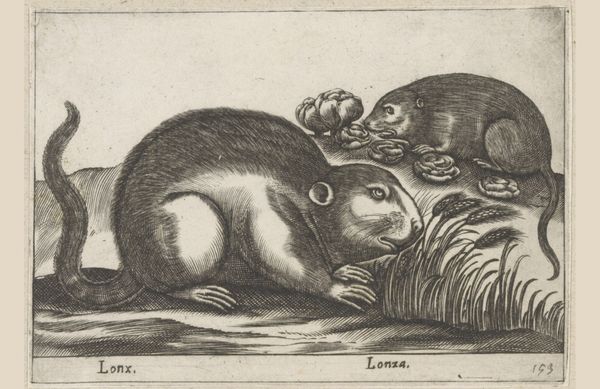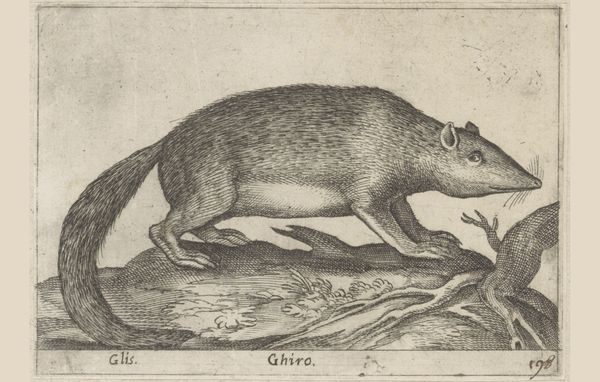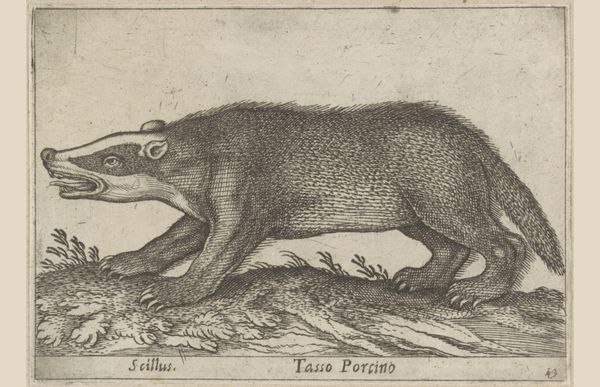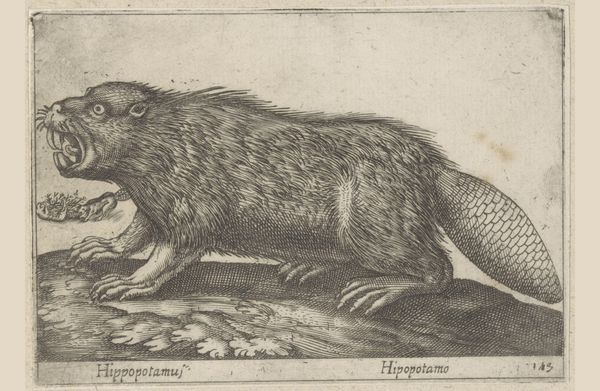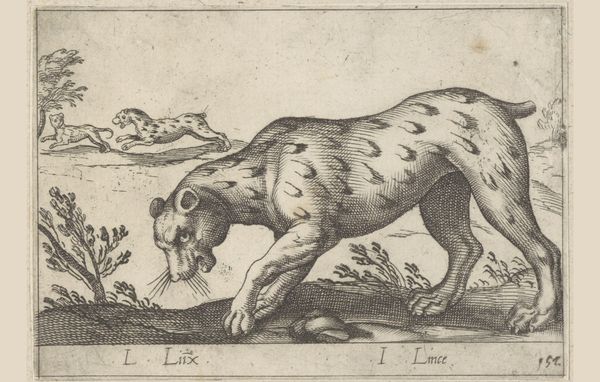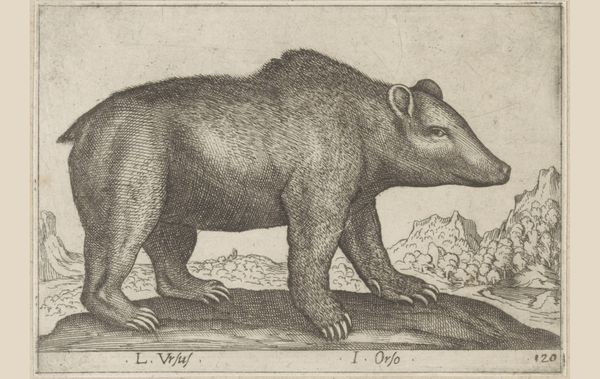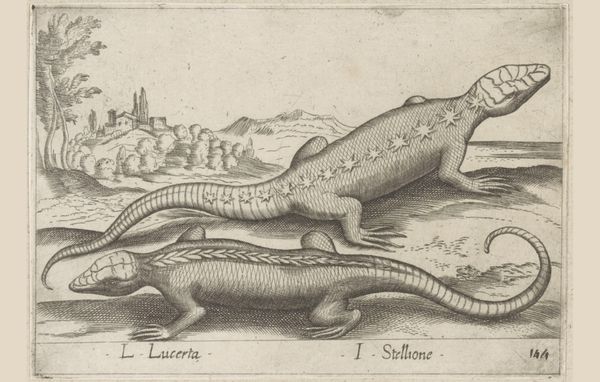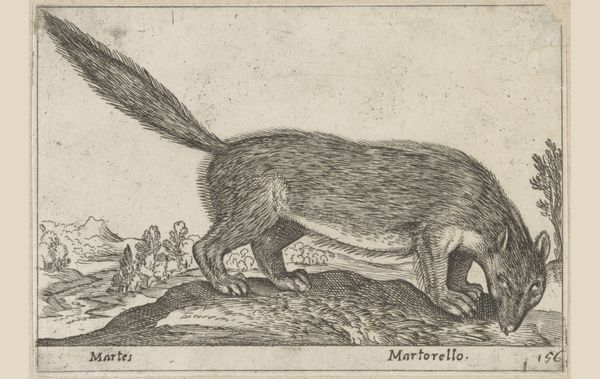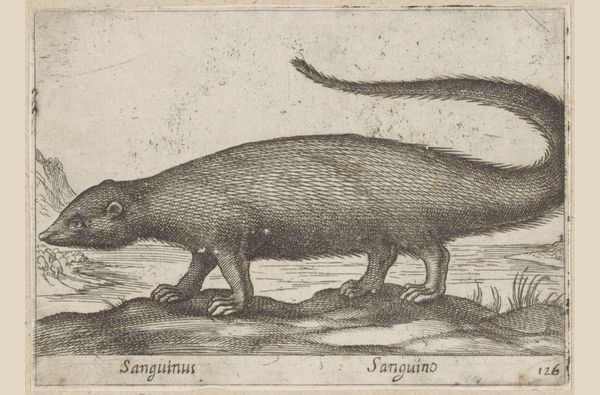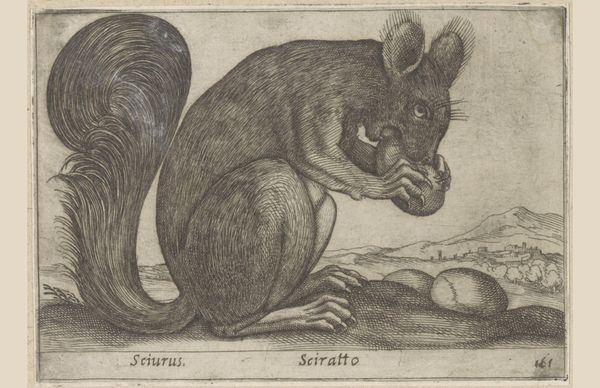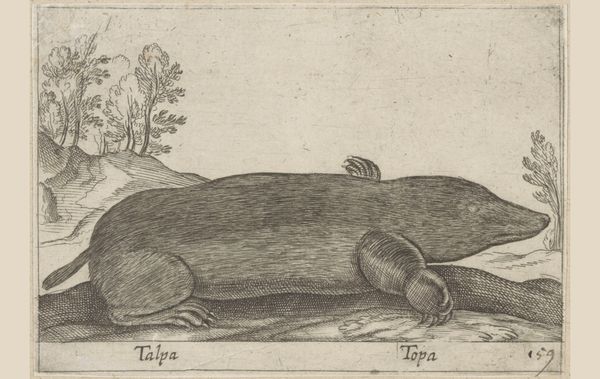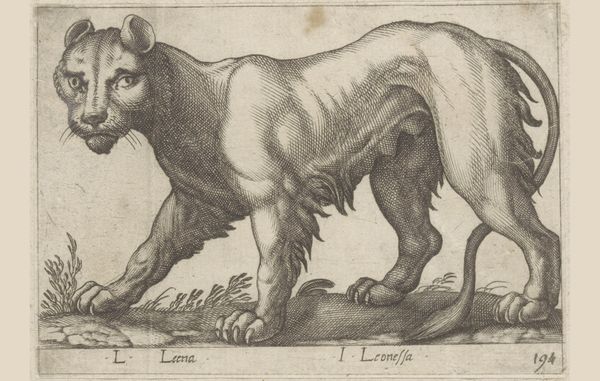
print, engraving
#
animal
# print
#
old engraving style
#
landscape
#
figuration
#
ancient-mediterranean
#
line
#
engraving
#
realism
Dimensions: height 95 mm, width 137 mm
Copyright: Rijks Museum: Open Domain
Editor: This is Antonio Tempesta's engraving "Otter," created before 1650. The depiction is so incredibly detailed for such a small work. I'm immediately drawn to how effectively he conveys texture and movement. What symbolic meanings might an otter, like this one with a fish, have carried in the 17th century? Curator: This seemingly straightforward depiction, precisely because of its realism and detail, acts as a kind of emblem. An otter with a fish... It evokes so much! Think about what the otter represents – cunning, resourcefulness, adaptability. But, in seizing the fish, does it symbolize more primal drives and instincts? Or is there a hint of more subtle cultural ideas here? Editor: Instincts... interesting. Is that why it is positioned so centrally? To drive the viewer toward that symbolism? Curator: The centrality certainly gives emphasis. Look at how the lines create a tension between observation and meaning. There's the pure naturalism in the depiction, the attention to anatomical detail. And yet, placing "Lutra," the otter, against the landscape serves almost as a caption, directing our understanding. In early emblem books, animals are not merely fauna. They are charged with moral and social significance. Where might an otter fit into those beliefs, in contrast to say, a lion? Editor: So it’s both an observation of the animal and a kind of symbolic representation... Is the prey itself – the fish – also symbolic? Curator: Precisely! The fish complicates it further, right? Fish are often associated with abundance, or perhaps the Christian symbol for Christ. Now consider: Does the otter taking the fish represent predation? The natural order? What happens if, instead, this illustrates an inversion of hierarchy, a disruption? Early scientists would examine bestiaries of animal symbology, as would their fellow learned and wealthy people, with real world repercussions based upon these visual lessons. Editor: That’s fascinating. I never would have considered all those layers. It’s more than just a picture of an otter! Thank you! Curator: And, as viewers, we can actively work against historical realities and build better futures because we learned what our forebears taught themselves about how images influence our understanding of the world around us.
Comments
No comments
Be the first to comment and join the conversation on the ultimate creative platform.
